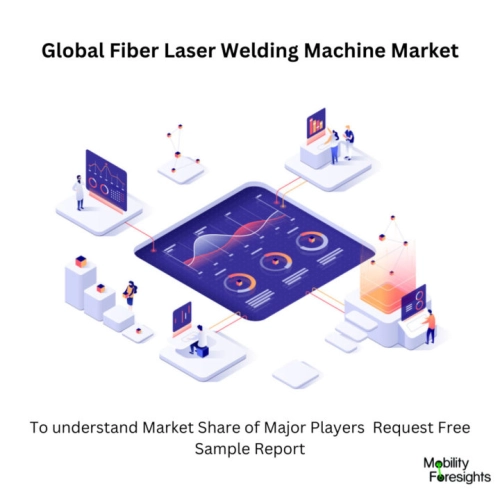
- Get in Touch with Us

Last Updated: Apr 26, 2025 | Study Period: 2023-2030
Fiber laser welding machines are one of the newest and most advanced forms of laser welding technology. Fiber lasers are a type of solid-state laser that use a doped fiber as the gain medium or lasing material.
The fiber laser beam is then directed to the welding point using a series of mirrors. This allows for a very small laser spot size and a higher energy density than other laser welding technologies.
Fiber laser welding machines are used in a variety of different applications, from medical device manufacturing to automotive part production. They can also be used to join materials that are difficult to weld, including stainless steel, aluminum, titanium and other alloys.
Fiber laser welding machines offer several advantages over other welding technologies. They have higher power output, are more efficient, and create less heat distortion.
They also require less maintenance and have a longer lifespan. Additionally, fiber laser welding machines are capable of welding extremely thin materials, such as those used in medical device manufacturing.
Although fiber laser welding machines are more expensive than traditional welding technologies, they offer a number of benefits that make them a great choice for many applications. They are easy to use and highly reliable, making them a great choice for any welding job.

The Global Fiber Laser Welding machine market accounted for $XX Billion in 2022 and is anticipated to reach $XX Billion by 2030, registering a CAGR of XX% from 2023 to 2030.
TRUMPF launched TruLaser 2030 fiber,a new fiber laser welding machine,This machine is equipped with a 6 kW fiber laser and is suitable for welding thin or thick materials with a high degree of precision.
The machine is designed to offer superior speed and accuracy with a single laser source and can be used for welding a variety of materials, including aluminum and stainless steel.
It is equipped with an automated loading and unloading system, as well as an intuitive user interface. The machine also offers a wide range of welding and cutting processes, such as welding of sheet metal, tubes, and profiles.
The OPTIPLEX NEXUS 3015 Fiber is the latest laser welding machine from Mazak. This machine is suitable for a wide range of welding needs, from high-precision welding of thin materials to welding of large parts with high speed.
The machine features a high-efficiency, high-power Ytterbium fiber laser that offers a wide range of welding parameters and a wide range of power levels.
The machine is designed to be easy to use and reliable, and it is capable of welding materials with a thickness of up to 2 mm. The machine is equipped with an automated nozzle changer and has the capability to switch between laser welding, laser cutting, and marking.
| Sl no | Topic |
| 1 | Market Segmentation |
| 2 | Scope of the report |
| 3 | Abbreviations |
| 4 | Research Methodology |
| 5 | Executive Summary |
| 6 | Introduction |
| 7 | Insights from Industry stakeholders |
| 8 | Cost breakdown of Product by sub-components and average profit margin |
| 9 | Disruptive innovation in the Industry |
| 10 | Technology trends in the Industry |
| 11 | Consumer trends in the industry |
| 12 | Recent Production Milestones |
| 13 | Component Manufacturing in US, EU and China |
| 14 | COVID-19 impact on overall market |
| 15 | COVID-19 impact on Production of components |
| 16 | COVID-19 impact on Point of sale |
| 17 | Market Segmentation, Dynamics and Forecast by Geography, 2023-2030 |
| 18 | Market Segmentation, Dynamics and Forecast by Product Type, 2023-2030 |
| 19 | Market Segmentation, Dynamics and Forecast by Application, 2023-2030 |
| 20 | Market Segmentation, Dynamics and Forecast by End use, 2023-2030 |
| 21 | Product installation rate by OEM, 2023 |
| 22 | Incline/Decline in Average B-2-B selling price in past 5 years |
| 23 | Competition from substitute products |
| 24 | Gross margin and average profitability of suppliers |
| 25 | New product development in past 12 months |
| 26 | M&A in past 12 months |
| 27 | Growth strategy of leading players |
| 28 | Market share of vendors, 2023 |
| 29 | Company Profiles |
| 30 | Unmet needs and opportunity for new suppliers |
| 31 | Conclusion |
| 32 | Appendix |